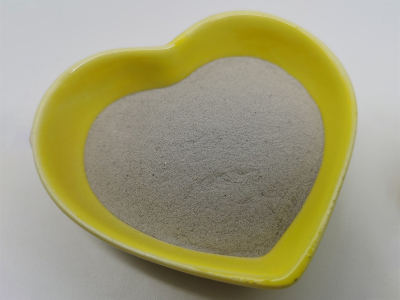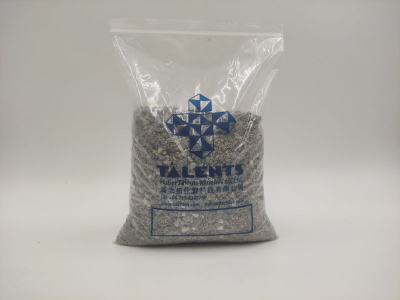Precipitated Barium Sulfate For Battery
Synthesis Process of Precipitated Barium Sulfate
High purity and low Fe content, suitable for battery use.
Product Features:
Particle size distribution is narrow.
Less impurity.
Excellent dispersibility.
Natural Barium Sulfate Technical Data:
| Barium sulphate content (Baso4)% | 98 |
| Whiteness%≥ | 96 |
| Water soluble content %≤ | 0.15 |
| Fe Content % ≤ | 0.0015 |
| Cl Content % ≤ | 0.04 |
| PH Value | 6.5-7.5 |
| Oil absorption g/100g | 15-20 |
| Mean Particle Size (D50) | 1.2um |
| Residue (45μm) % | 0.01 |
| Particle size less than 10μm % | 99 |
| Particle size less than 5μm % | 95 |
| Particle size less than 2μm % | 70 |
As battery technology evolves, material scientists and manufacturers are increasingly turning to precipitated barium sulfate (BaSO₄) as a functional filler in battery separators, electrolyte composites, and polymeric casings. Its chemical stability, high density, electrical insulation, and particle uniformity make it a valuable additive in both lead-acid and lithium-ion battery components.
This article provides a technically detailed, SEO-optimized, and regulation-aware guide on the use of precipitated barium sulfate for battery applications. We will explore its manufacturing, structural properties, compliance requirements, use cases, and operational considerations—followed by FAQs and a professional call to action.
What Is Precipitated Barium Sulfate?
Precipitated barium sulfate, often referred to as blanc fixe, is a synthetically produced, ultra-pure form of BaSO₄. Unlike naturally occurring barite, precipitated BaSO₄ is manufactured via a controlled chemical reaction that ensures consistent morphology, narrow particle size distribution, and low impurity levels.
Synthesis Reaction (Typical):
This process results in a white, chemically inert, non-toxic powder, widely used in technical applications, including batteries.
Why Use Precipitated Barium Sulfate in Batteries?
| Property | Benefit in Battery Systems |
|---|---|
| High Specific Gravity (4.3–4.5) | Enhances density of battery pastes and structural fillers |
| Chemical Inertness | Stable against acid electrolytes and reactive battery compounds |
| Excellent Dispersibility | Forms homogeneous composite mixtures in separators or coatings |
| Electrical Insulation | Prevents short-circuiting and improves dielectric performance |
| Narrow Particle Size (D50 0.5–1.5μm) | Ensures uniform coating and minimized voids in polymers |
Applications in Battery Technologies
1. Lead-Acid Battery Paste
Acts as an inert filler in negative and positive plates
Improves mechanical integrity, reduces plate expansion
Enhances weight balance without compromising electrical performance
2. Lithium-ion Battery Separators
Fused into polyolefin separators (e.g., PE/PP) to enhance:
Thermal shutdown performance
Porosity and dimensional stability
Electrolyte wetting behavior
3. Polymer Matrix Electrolytes
Used in solid or gel electrolytes to:
Stabilize polymer crystallinity
Increase dielectric constant
Provide barrier properties against dendrite growth
4. Battery Housing and Encapsulation
Added to battery casing polymers (e.g., ABS, PP) to improve:
Flame retardancy
UV resistance
Weight and rigidity balance
Technical Specifications (Battery-Grade)
| Property | Value Range | Method / Standard |
|---|---|---|
| BaSO₄ Purity | ≥ 98.5% | ISO 3262-2 / GB/T 2899 |
| Specific Gravity | 4.3–4.5 | ASTM D153 / ISO 787-10 |
| D50 Particle Size | 0.5–1.5 μm | Laser Diffraction (ISO 13320) |
| Whiteness (ISO) | ≥ 96 | ISO 2470 |
| Oil Absorption | ≤ 10 g/100g | ISO 787-5 |
| Moisture Content | ≤ 0.2% | ISO 787-2 |
| pH (10% slurry) | 6.5–8.5 | ISO 787-9 |
| Surface Treatment (Optional) | Stearic acid, silicone | Manufacturer-specified |
Compliance and Safety Considerations
| Regulation / Compliance | Relevance to Battery Industry |
|---|---|
| REACH (EC No. 1907/2006) | Compliant and exempted as an inorganic mineral |
| RoHS Directive | Free of Pb, Cd, Hg, Cr⁶⁺, PBB, PBDE |
| UN Manual of Tests and Criteria | Non-hazardous material for transport and storage |
| NIOSH/OSHA Guidelines | Dust control required during handling |
| ISO 9001 / ISO 14001 | Most battery-grade BaSO₄ is certified for quality and environment management |
Manufacturing and Quality Control
Raw Materials: High-purity BaCO₃ or BaCl₂ + Na₂SO₄
Reactor Design: Precise pH, agitation speed, and temperature control
Filtration & Washing: Removes NaCl and soluble impurities
Drying: Conducted below 120°C to prevent agglomeration
Milling & Classification: Jet milling or air classification to D50 < 1.0μm
Surface Treatment (if needed): Improves dispersion in polymers or electrolyte matrices
Frequently Asked Questions (FAQs)
❓ Can precipitated barium sulfate improve battery lifespan?
Yes. Its chemical stability and role in reinforcing physical components (e.g., separators, casings) reduce degradation and increase thermal safety margins.
❓ How is it different from natural barite?
Precipitated BaSO₄ is synthetic, ultra-pure, and finer in particle size—tailored for sensitive applications like batteries and medical use, whereas natural barite may contain impurities.
❓ Does it affect battery capacity?
It does not directly contribute to energy storage but plays a functional role in structure, safety, and stability—supporting higher cycle life and system durability.
❓ Is it compatible with lithium-metal and solid-state systems?
Yes. In solid polymer electrolytes or ceramic separators, it acts as a non-conductive barrier and electrolyte stabilizer.
Summary: Why Choose Precipitated BaSO₄ for Batteries?
| Benefit | Value Delivered |
|---|---|
| High purity & insulation | Prevents ionic leakage and electrical shorts |
| Thermochemical stability | Withstands extreme conditions in battery cycles |
| Fine particle size distribution | Enables homogeneous dispersion in polymers and gels |
| Surface-modifiable | Customization for electrolyte or composite compatibility |
| Industry-compliant | Fully meets REACH, RoHS, and transport safety criteria |





